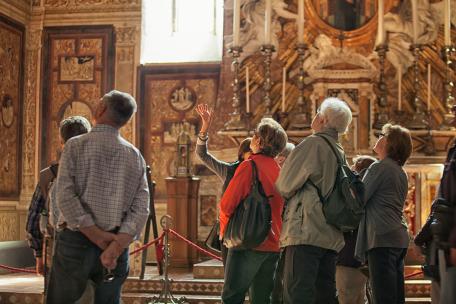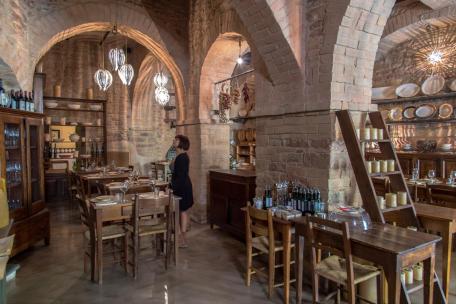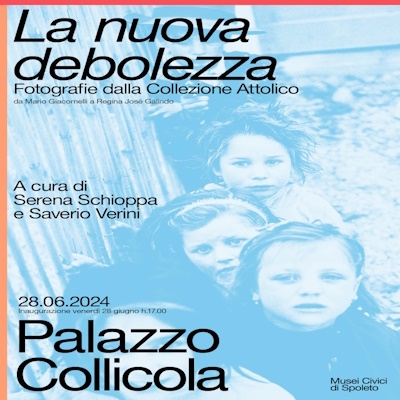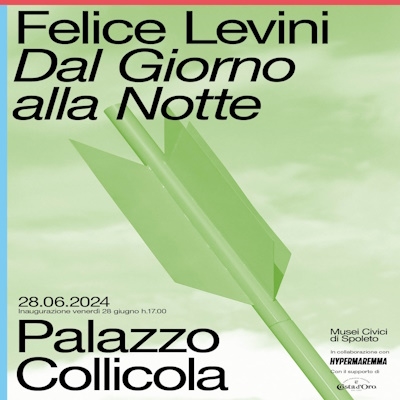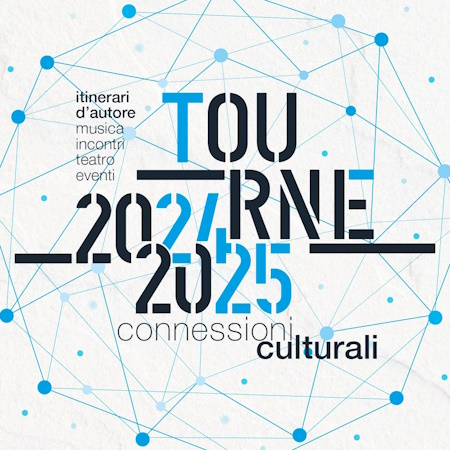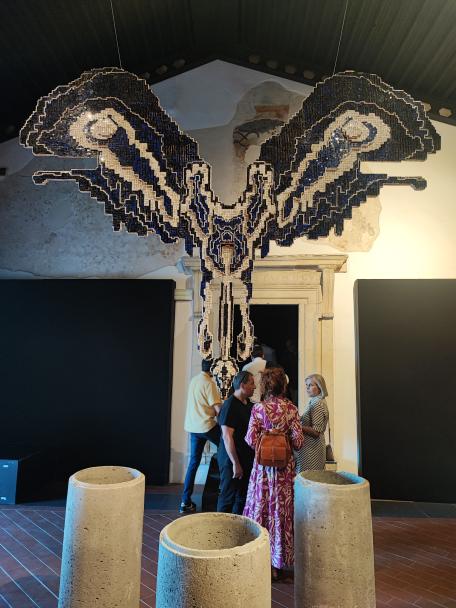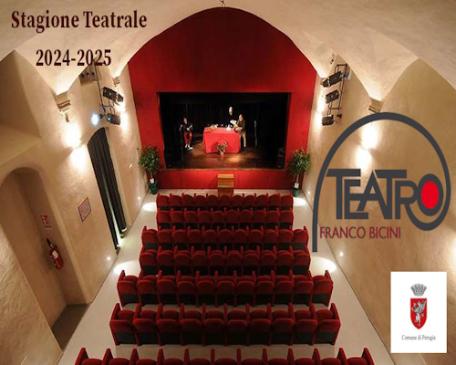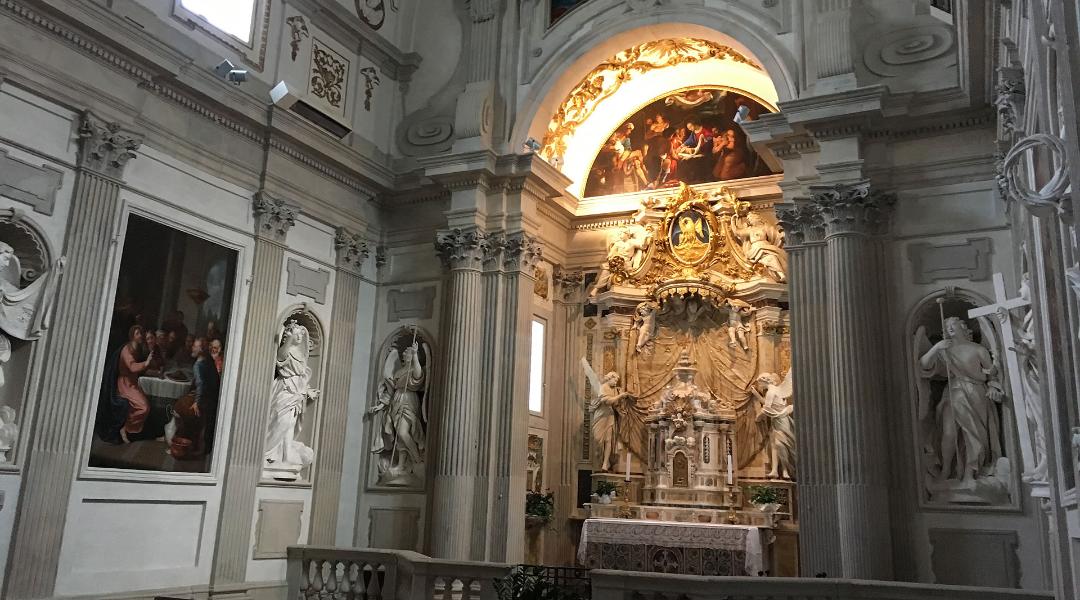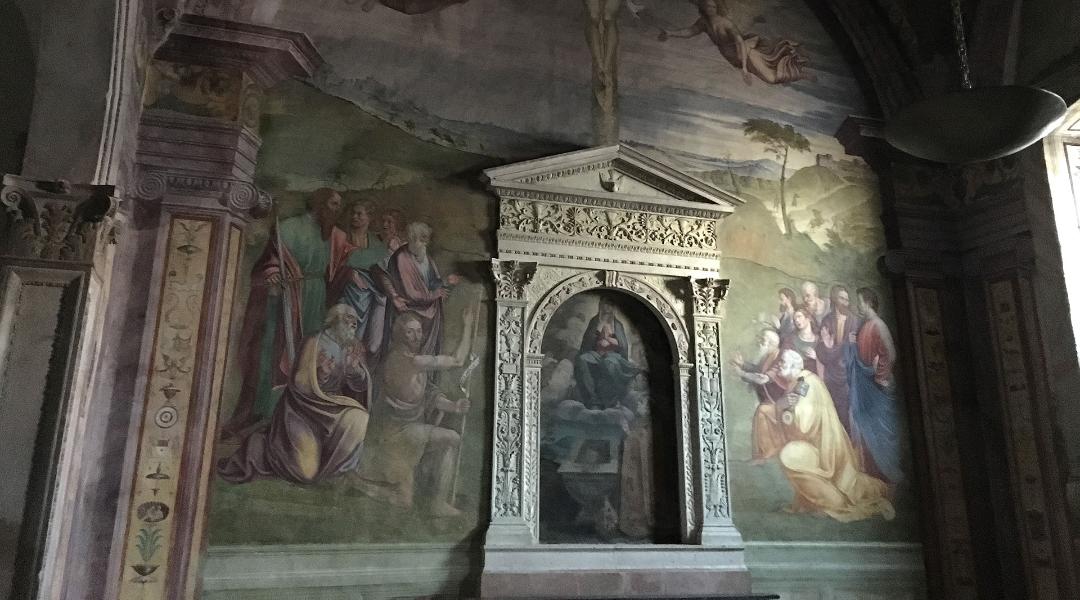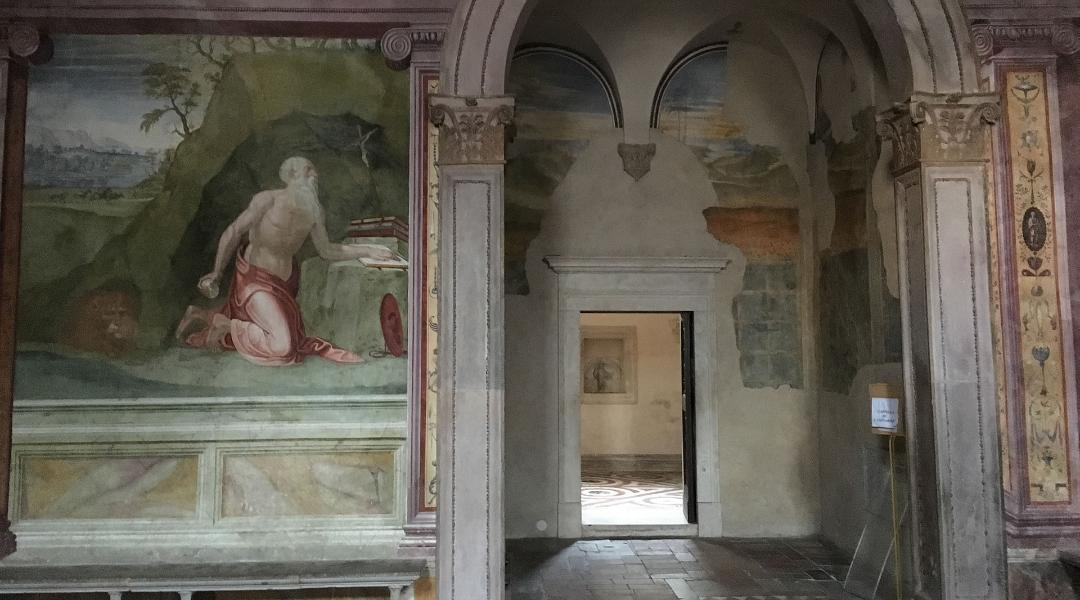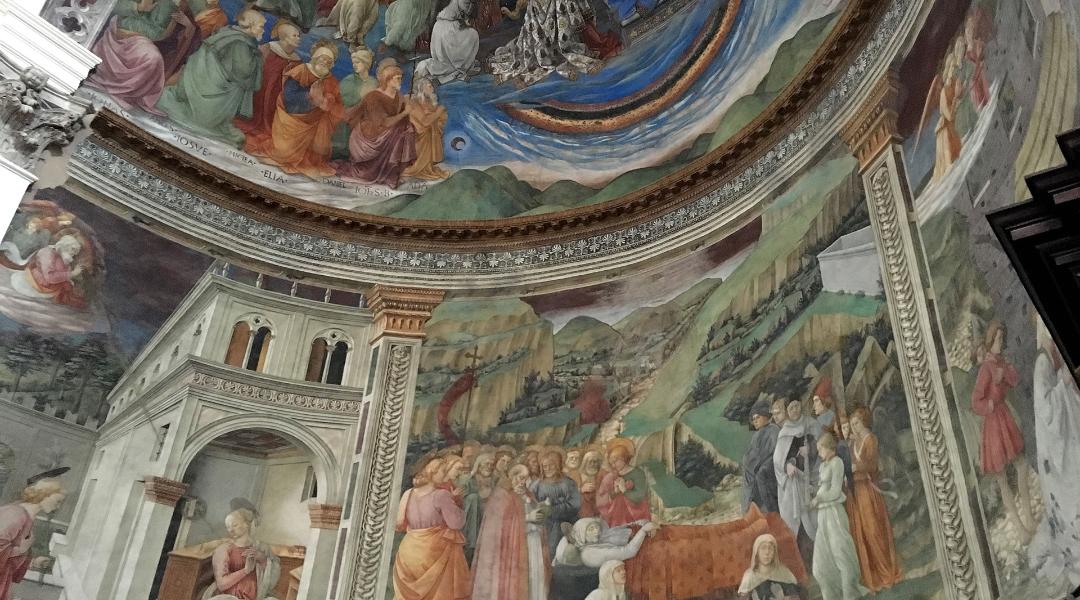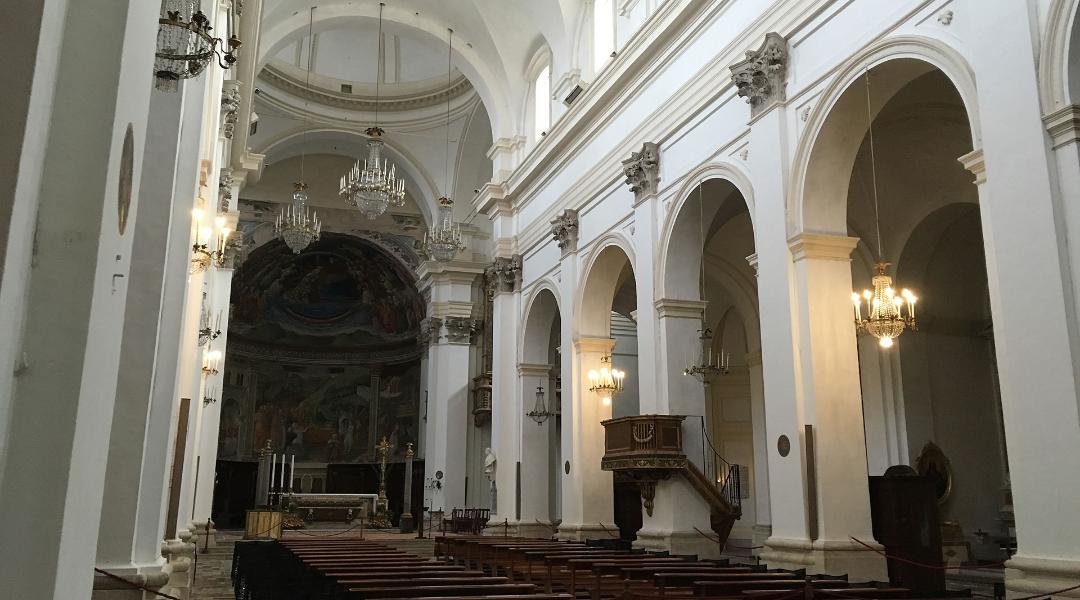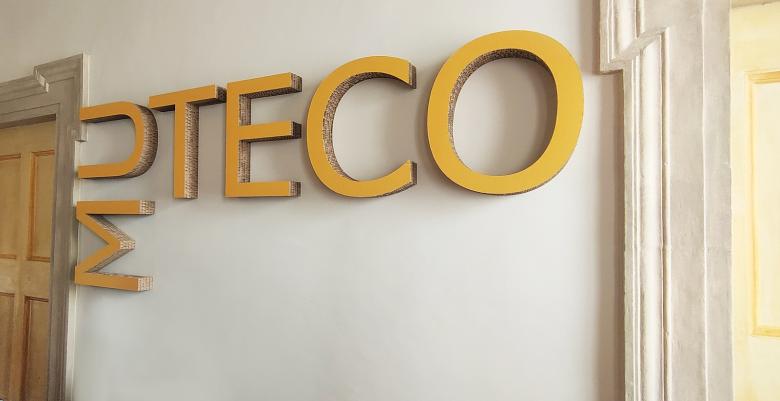The Renaissance-style portico, designed by Barocci, a master who had worked with Francesco di Giorgio Martini at the Ducal Palace in Urbino, opens onto the exterior with five round arches separated by Corinthian columns. Inside the portico are the three entrance portals to the cathedral. The magnificent central portal, dating from before 1198 - the date of consecration of the church by Pope Innocent III - is known as the Porta Paradisi, and has rich sculptural decoration on the jambs and architrave, making it one of the finest examples of stone ornamentation from the Romanesque period.
The interior of the church, which was radically transformed in the first half of the 17th century, is Baroque and Latin cross-shaped, with three naves of six bays each, a transept, a large semicircular apse and a dome without a drum. The mosaic floor of the nave remains from the Romanesque cathedral, mostly from the 12th century with cosmatesque motifs. The floors of the aisles were instead made by Matteo Rosso Balsimelli da Settignano in the second half of the 15th century.
A bronze bust of Urban VIII by Gian Lorenzo Bernini (1640) stands in the counterfacade niche, in memory of the renovation work and in homage to the pope, former bishop of Spoleto.
The first chapel in the right aisle, named Eroli after the bishop who commissioned it in the mid-15th century, houses one of the masterpieces by Bernardino di Betto known as Pinturicchio: the fresco of the Madonna and Saints.
Before reaching the right transept, one can admire the painted Cross by Alberto Sotio (1187) in the iconography of the living Christ (triumphans) developed in central Italy.
In the right transept, at the altar, a painting by Annibale Carracci and, on the left wall, sepulchre of the painter Filippo Lippi (died in Spoleto in 1469), designed by his son Filippino and made by an unknown 16th-century Florentine sculptor.
To the right of the presbytery, the 17th-century Chapel of the Holy Icon is so called because of the presence of a 12th-century Byzantine tablet, donated to the city by Frederick Barbarossa as a sign of peace.
The apse is undoubtedly the focal point of the Spoleto Cathedral’s pictorial decoration, entirely covered by the splendid frescoes by the Florentine painter Filippo Lippi and helpers, depicting Stories of the Virgin, painted between 1463 and 1469. On the back wall, in the curve of the apse, one can admire the Annunciation on the left, the Dormitio Virginis in the centre and the Nativity on the right; above, the Coronation of the Virgin in the presence of angels and saints. In the centre of the presbytery is the high altar in polychrome marble, the work of Giuseppe Valadier (1792), flanked by four tall candlestick-holding columns.
Finally, on the left aisle is the Chapel of Relics, which houses wooden sculptures and inlays from the 16th century, but above all an exceptional testimony: one of only two surviving autograph letters written by St. Francis addressed to Friar Leo.
From the chapter house, it is possible to access the 9th-century crypt of San Primiano, which is the only remaining element of the ancient early-medieval building that existed before the present cathedral. Ancient frescoes depicting Stories of St Benedict and St Scholastica can be admired there.










